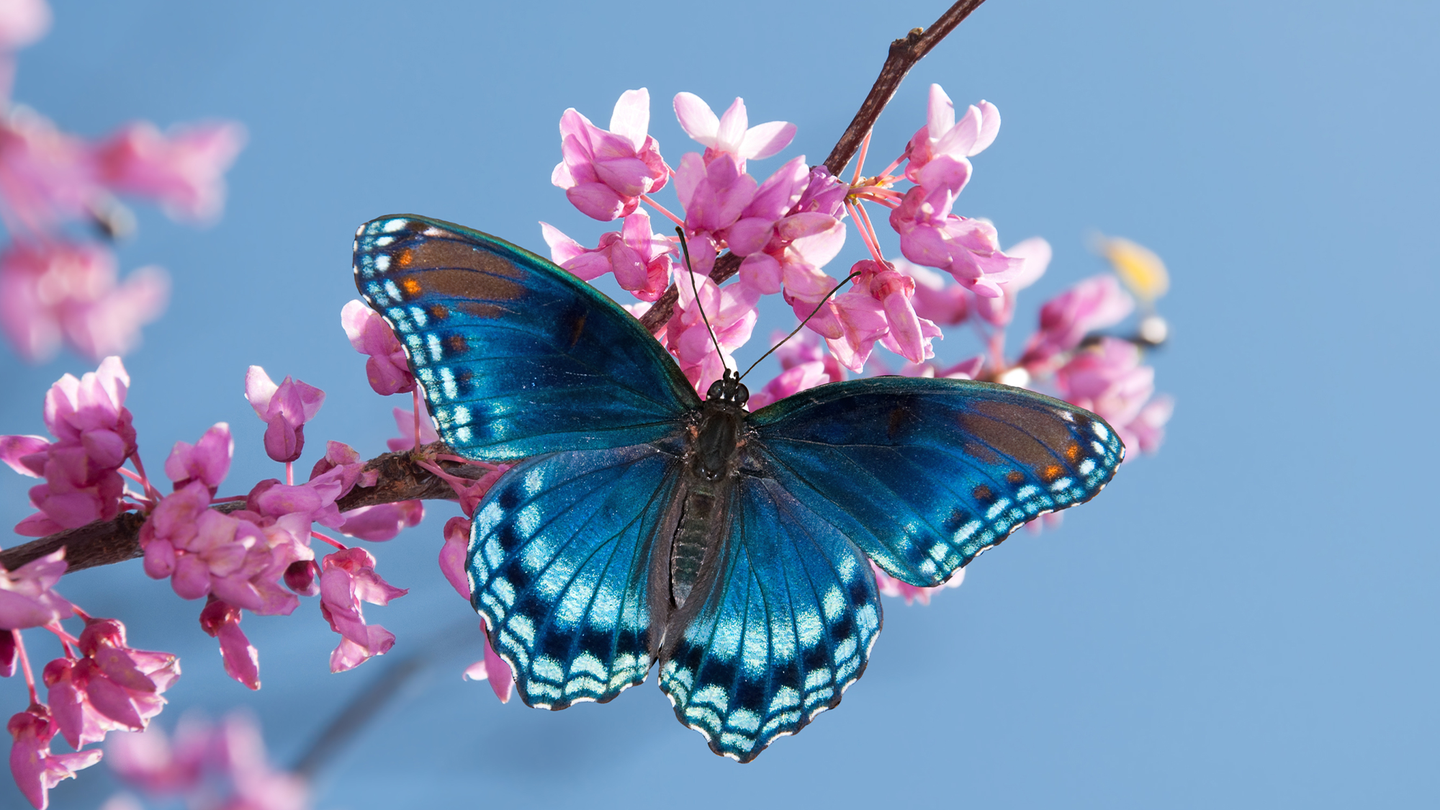A ‘butterfly tree of life’ reveals the origins of these beautiful insects
The colorful insects first evolved more than 100 million years ago thanks to some enterprising moths.

Up until 100 million years ago, butterflies were night creatures. Only nocturnal moths were living on Earth until some rogue moths began to fly during the day. These enterprising members of the order Lepidoptera took advantage of the nectar-rich flowers that had co-evolved with bees by flying during the day. From there, close to 19,000 butterfly species were born.
[Related: Save caterpillars by turning off your outdoor lights.]
In 2019, a large-scale analysis of DNA helped solve the question of when they evolved. Now, the mystery of where in the world colorful winged insects evolved plagues lepidopterists and museum curators. A study published May 15 in the journal Nature Ecology and Evolution found that butterflies likely evolved in North and Central America, and they forged strong botanical bonds with host plants as they settled around the world.
Getting to this conclusion took a four-dimensional puzzle that makes 3D chess look like a game of Candyland. Scientists from multiple countries had to assemble a massive “butterfly tree of life” using 100 million years of natural history on their distribution and favorite plants, as well as the DNA of more than 2,000 species representing 90 percent of butterfly genera and all butterfly families.
Within the data were 11 rare butterfly fossils that proved to be crucial pieces to the story. Butterflies are not common in the fossil record due to their thin wings and very threadlike hair. The 11 in this study were used as calibration and comparison points on the genetic trees, so the team could record timing of key evolutionary events.
They found that butterflies first appeared somewhere in central and western North America. 100 million years ago, North America was bisected by an expansive seaway called the Western Interior Seaway. Present day Mexico was joined in an arc with the United States, Canada, and Russia. North and South America were also separated by a strait of water that butterflies had little difficulty crossing.
The study believes that butterflies took a long way around to Africa, first moving into Asia along the Bering Land Bridge. They then radiated into Southeast Asia, the Middle East, and eventually the Horn of Africa. They were even able to reach India, which was an isolated island separated by miles of open sea at this time.
[Related: The monarch butterfly is scientifically endangered. So why isn’t it legally protected yet?]
Australia was still connected to Antarctica, one of the last remnants of the supercontinent Pangaea. Butterflies possibly lived in Antarctica when global temperatures were warmer, and made their way north towards Australia before the landmasses broke up.
Butterflies likely lingered along the western edge of Asia for up to 45 million years before making the journey into Europe. The effects of this pause are still apparent today, according to the authors.
“Europe doesn’t have many butterfly species compared to other parts of the world, and the ones it does have can often be found elsewhere. Many butterflies in Europe are also found in Siberia and Asia, for example,” study co-author and curator of lepidoptera at the Florida Museum of Natural History Akito Kawahara said in a statement.
Once butterflies were established all over the world, they rapidly diversified alongside their plant hosts. Nearly all modern butterfly families were on Earth by the time dinosaurs went extinct 66 million years ago. Each butterfly family appears to have had a special affinity for a specific group of plants.
“We looked at this association over an evolutionary timescale, and in pretty much every family of butterflies, bean plants came out to be the ancestral hosts,” Kawahara said. “This was true in the ancestor of all butterflies as well.”
Over time, bean plants have increased their roster of pollinators to include multiple types of bees, flies, hummingbirds, and mammals, while butterflies have similarly expanded their palate. These botanical partnerships helped make butterflies blossom from a minor offshoot of moths to one of the world’s largest groups of insects, according to the study.
“The evolution of butterflies and flowering plants has been inexorably intertwined since the origin of the former, and the close relationship between them has resulted in remarkable diversification events in both lineages,” study co-author and Florida Museum curator Pamela Soltis said in a statement.
